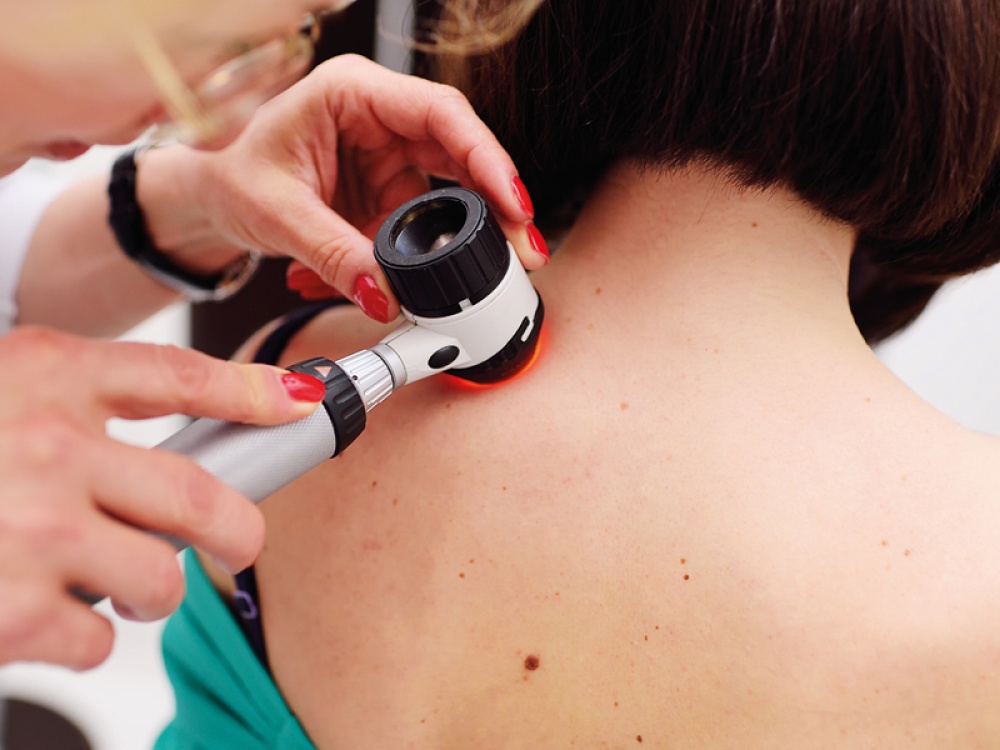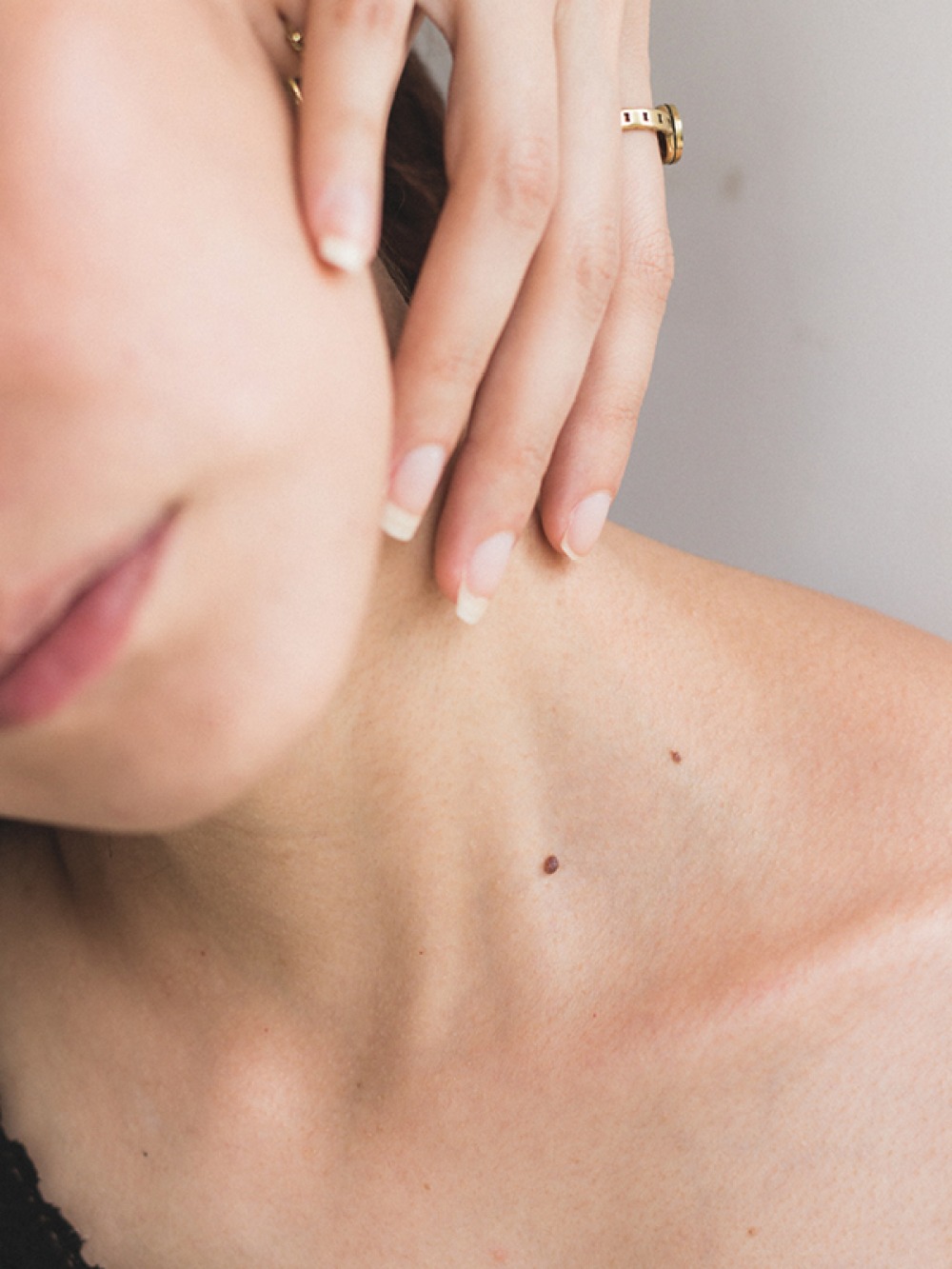What You Need to Know About Skin Cancer

May is Skin Cancer Awareness Month
Data from the World Health Organisation’s International Agency for Research on Cancer suggests the global total number of new melanoma cases will reach 413,100 per year by 2030, an increase of over 27 percent on the 324,635 cases registered a decade earlier in 2020. Melanoma mortality is predicted to reach 74,750 in 2030, a 31 percent increase on 2020.
Those might be global figures, but the incidence of melanoma is rising rapidly in the UK too with around 16,700 new melanoma skin cancer cases recorded in the UK every year, making it the 5th most common cancer for us. So although May is the month it is under the spotlight, organisations such as Melanoma UK advocate the importance of monthly self checks. The difference between melanoma and other cancers is that it can be seen, so making a 10-minute head-to-toe skin check part of your monthly routine is vital. Once detected it can be dealt with quickly.
So what exactly is melanoma? Melanoma is a type of cancer that starts in cells in the skin called melanocytes. These cells make a pigment called melanin which gives skin its natural colour. Melanin helps to protect the body from ultraviolet light (UV radiation) from the sun. The most common sign of melanoma is the appearance of a new mole, a change in an existing mole or in other pigmented tissues, such as those found in the eye.
People with darker skin tones are generally less likely to get melanoma than those with fairer skin as their skin produces more melanin, which protects against the harmful effects of UV radiation. In women, the most common place for melanoma to develop is on the legs whilst in men, melanoma is most commonly found on the chest and back. And although melanomas are uncommon in areas which are protected from sun exposure, in dark-skinned people, melanoma is actually more commonly found under the nails of the fingers or toes, on the palms of the hands, or soles of the feet.
When skin is exposed to sunlight, our melanocytes increase the amount of melanin produced to help absorb more potentially harmful UV rays. This makes the skin darker and gives it a suntanned appearance. Sadly, a suntan is an indication that the skin is trying to protect itself. Moles are simply a collection of melanocytes close together. Melanoma develops from damaged melanocytes that inherit or experience a mutation which allows the melanocyte to grow and divide more quickly than usual.
In melanoma, the melanocytes also start to spread into the surrounding surface layers of skin and if not diagnosed and treated, melanoma will grow and spread along the epidermis before penetrating deeper layers of the skin and eventually coming into contact with lymph and blood vessels. If the melanoma breaks through into a blood vessel then this allows the melanoma to spread to distant sites or distant organs. This is called ‘metastatic melanoma’. Metastatic melanoma most commonly occurs in the liver, lungs, bones or brain.

There are three main types of skin cancer: basal cell carcinoma, squamous cell carcinoma, and melanoma. Because each has many different appearances, it is important to know the early warning signs.
So how can you check your skin and what are you looking out for? Melanoma UK suggest you follow their ABCDE guide which helps to highlight what you need to be aware of in terms of melanoma. If you spot any of these then you should see your GP or a skin specialist to get it checked out.
A is for Asymmetry
An asymmetrical mole is one which is an odd shape.
B is for the Border
Is the border of your mole very irregular in outline? The border of early melanomas can be uneven and may present as a series of semi-circular curves or v-shaped points. Benign moles have smooth, even borders.
C is for Colour
Moles with two or more colours are a warning flag. A melanoma may present as a variety of colours and can in some instances become red, white or blue. Benign moles tend to be one colour, normally a single shade of brown.
D is for Diameter
Melanomas tend to have a larger diameter so any mole larger than 5mm should be checked.
E is for Elevation
Is the mole raised? Moles or lesions that begin to change in any way; size, shape, colour, elevation, bleeding, itching or crusting must be reviewed.
Research indicated those that are at increased risk of melanoma are those with a large number of moles, a family history of skin cancer, pale skin that burns easily and a history of severe sunburn, anyone with a suppressed immune system and anyone with significant exposure to sunlight such as working outdoors or living abroad.
Your GP will check your skin and may refer you to a skin specialist if they are concerned. Early detection is important, so you may not wish to wait for a GP appointment and there are several specialist clinics which offer a private checking service, so whether you have 20 or 200 moles, it is always important to seek advice if you notice any of the above concerns. Be aware however, that some clinics offer a full body check whilst others will check only those moles of concern to you and will charge per mole, so always check on booking.
North East
Check4Cancer, Broadway, Ponteland NE20 9PW
(Skin Check £198)
The Mole Clinic, at SK:N, 76 Grey Street, Newcastle NE1 6AF
The Mole Clinic, at SK:N, Middlesbrough James Cook TS4 3BW
(Single Mole Diagnostic Report Service £60)
Boots Pharmacies, regionwide
(Single Mole Diagnostic Report, £40)
Nuffield Health, Clayton Road, Newcastle Upon Tyne NE2 1JP
(POA)
Nuffield Health, Junction Road, Norton TS20 1PX
(POA)
Yorkshire
Skin Surgery Clinic, Guiseley Leeds LS20 8EB
Mole Check, from, £175
Ramsay Health at Park Hill Hospital, Doncaster DN2 5TH
Full Body Screening, £205
Boots Pharmacies Yorkshirewide
Single Mole Diagnostic Report, £40
Check4cancer, Hull Road, York YO10 3LG
Full Body Check, £198
Delta Mole Mapping, Holderness Road, Hull HU8 8TB
Total Body Mapping, £350










